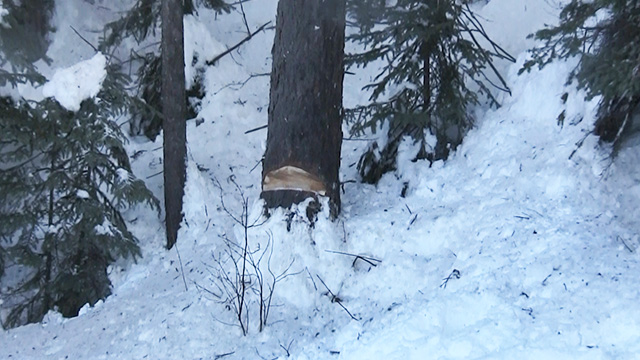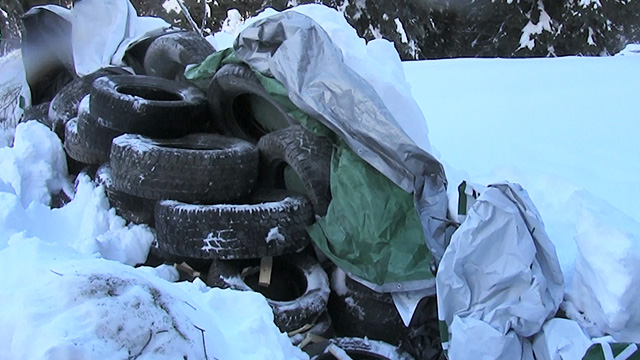Open Letter from David Pfeiffer, Coastal GasLink President
Posted by Coastal GasLinkCoastal GasLink values the strong relationships we have built with our Indigenous partners, contractors and communities, and are striving to build an extraordinary legacy for now and for the future.
As far back as 2012 when this project was first considered, Coastal GasLink engaged with Indigenous communities to learn from them, and to ensure that their traditions and values were respected and protected.
We know the stories of past economic development, where benefits were not fairly shared with the impacted Indigenous communities. With Coastal GasLink that is not the case. From the beginning, we were determined to ensure that Indigenous and northern communities, residents, businesses and workers across the North would significantly benefit from our project.
Since 2012, we engaged with Indigenous communities, to answer their questions about gas pipelines, to accommodate their concerns and to look for their partnerships in this incredible project.
We are extremely proud of the broad support we have across northern B.C., and that all 20 elected Indigenous communities have signed agreements with Coastal GasLink, communities that are now realizing the opportunities that were envisioned. We are also proud that we are providing an opportunity for Indigenous equity ownership in the project.
This is why the situation we find ourselves in today is so disappointing.
Last year, following the initial blockade, I personally met with Unist’ot’en leadership who agreed on an approach that put safety at the forefront and addressed concerns. Safety for people who live and find help at the Unist’ot’en Healing Centre and safety for our own crews as they travelled across the Morice River Bridge.
I was extremely disappointed when the Unist’ot’en decided to terminate the Access Protocol last month.
I was also disappointed in our inability to meet with the Hereditary Chiefs over this past month, and over the past years, as I believe that through dialogue, respect and openness, we could have found a way to work together for the benefit of the Wet’suwet’en people.
Last week, I stated that time was running short and that we would need to find a peaceful solution quickly if we were going to meet our construction timelines and our commitments to LNG Canada, our partner Indigenous and northern communities, and the workers who are depending on their Coastal GasLink paycheques to provide for their families.
Nathan Cullen, who acted in good faith as a liaison between all parties, requested a seven-day period to try and find a peaceful solution. Coastal GasLink agreed with this approach and appreciates the efforts of Mr. Cullen, Minister Scott Fraser and his staff, Premier John Horgan and all MLAs who supported efforts to de-escalate the situation and find a peaceful path forward.
It is unfortunate that one could not be found and that the Wiggus process concluded without an agreement.
Following the breakdown in negotiations, many statements were issued, including one by Coastal GasLink that committed to continued dialogue as we move forward. One statement was also issued on Twitter by Chief Smogelgem, Warner Naziel stating, “Efforts to de-escalate the situation on the territories were severed when the Province refused to pull the permits they issued to CGL.”
It is disappointing that the Hereditary Chiefs sought to have our legal permits rescinded by the provincial government. We are grateful to the Province for their commitment to our project and for their respect for the six years of exceptional effort expended to achieve not only our permits but also the support of our 20 partner Indigenous communities, local communities and the public who recognize the benefits our project will deliver.
Today RCMP enforced the Interlocutory Injunction granted by Madam Justice Church on December 31, 2019.
This is not the outcome we wanted. We have made exceptional efforts to resolve this blockade through engagement and dialogue. Over the past month and over many years, we’ve reached out to the Hereditary Chiefs, over and over, but to no avail. It’s truly unfortunate that we were unable to find a path forward that allowed for the construction of Coastal GasLink with the support of all.
Coastal GasLink supports efforts to ensure our contractors and crews can safely resume their authorized and legally permitted work. We will now turn our efforts to removing the obstacles along the route in a safe and environmentally responsible way.
Now that our work has resumed, we will press ahead in accordance with our construction schedule and do not anticipate any further disruptions. We will continue to search for opportunities for dialogue with the Hereditary Chiefs and the Unist’ot’en, to search for common ground that accommodates their concerns and benefits the Wet’suwet’en people. We will also continue to abide by the Access Protocol that the Unist’ot’en terminated and will do everything in our power to bridge the divides that exist and deliver substantial benefits to the Wet’suwet’en people.
In closing, I would like to thank our Indigenous partners, northern communities and the women and men who come to work every day to build this exceptional project, and to build our extraordinary legacy. Your support has been invaluable in getting Coastal GasLink to this point and will be invaluable in the many years ahead.
David Pfeiffer, President, Coastal GasLink
Frequently Asked Questions
Find answers to frequently asked questions below. Do you have a question that isn’t answered below? Check out our FAQ page or please contact us at coastalgaslink@tcenergy.com.
What's next for Coastal GasLink?
The Coastal GasLink project is vital to our customers, our Indigenous partners, and communities across northern British Columbia.
The focus now is to turn efforts to removing the obstacles at a small portion of Section 7 of the route in a safe and environmentally responsible way. Coastal GasLink contractors and crews will resume their authorized and legally permitted work as quickly as possible.
What obstacles are there to remove? How will this be done?
Coastal GasLink's Security and Safety teams will work alongside contractors and crews to move obstacles, such as tire piles, pallets, and other materials, into a waste sorting bin for proper disposal. Trees that have been felled or cut will be moved to the side of the road in accordance with provincial government regulations.
The photos below were taken by Coastal GasLink crews on Feb. 6, 2020:


Why can't the route be adjusted to address the concerns of the Wet'suwet'en Hereditary Chiefs?
The project route being built is fully permitted and is the result of rigorous fieldwork and consultation with Indigenous and local communities. Coastal GasLink adjusted its original routing through extensive consultation with Indigenous communities in the Morice River area near Houston, to protect sensitive cultural and environmental areas. Any significant change to the route at this stage would not allow the project to be successful.
Some opponents have said Coastal GasLink doesn't have all the necessary permits. Is that true?
The project has all necessary permits for construction. Coastal GasLink was awarded an Environmental Assessment Certificate in 2014 in consideration of Indigenous and local community input, environmental factors, land use compatibility, safety, constructability and economics. This certificate was extended in Oct. 2019 for a further five years after having been thoroughly reviewed by the Environmental Assessment Office.
Have you heard from other Chiefs along the project? Do they support the Hereditary Chiefs?
We are in regular contact our Indigenous partners and communities along the project route. We have agreements with all 20 of the First Nations along the 670-kilometre project route, and we continue to receive strong support. We will continue to engage with all Indigenous and local communities as we progress this critical energy infrastructure project. This project is vital to British Columbia and Canada, including the 20 First Nation communities along the route who are benefiting from social and economic development this project offers and want to see it move ahead.
Will construction of a natural gas pipeline lead to its future conversion to an oil pipeline?
As stated on bclaws.ca, the Oil and Gas Activities Act prevents the Oil and Gas Commission from issuing a permit to convert an LNG facility pipeline into a pipeline for transporting oil or diluted bitumen. All of our studies, design, and construction are planned for natural gas transportation. Any future changes to the use of the pipeline would be subject to regulatory approval, including full consultation with government, local communities and First Nations, however there are no plans to convert this line to any other use. Coastal GasLink will also be bound by contract to provide natural gas for a minimum of 25 years, with numerous options to renew this service. The LNG Canada facilities, to which the pipeline will deliver natural gas, have no need for oil; they and the upstream natural reserves represent a significant capital investment and are expected to operate for well in excess of 25 years.
Did construction on the route stop during protestor activity?
No. The blockade was on a small area of the route, and construction is proceeding on over 30 work fronts across the 670-kilometre project route with over 1,000 women and men at work. We are focused on resuming construction in this small area as soon as the road is cleared of snow and fallen trees.
For further information about this issue, we recommend reading the 'What's New' section of the Coastal GasLink website, beginning with this post.